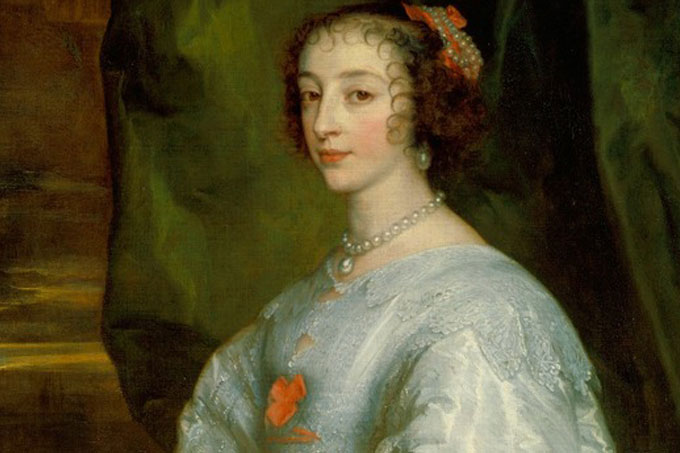Dr Sara Wolfson, School of Humanities Senior Lecturer, questions the ownership of recently discovered bounty in the Waddon Sea.
The discovery of gowns, silverware, textiles, and a host of other perfectly preserved treasures off the island of Texel, provides new material evidence for the turbulent journey of Charles I’s wife, Henrietta Maria to the Netherlands in early March 1642.
Outwardly, the queen’s journey was to convey her ten-year-old daughter, Mary to her husband William, son of the Stadtholder Frederick Henry, Prince of Orange. Yet, in reality Henrietta Maria’s presence in Holland had more important political, diplomatic, and financial aims. Over the next year, the queen sought to raise money, troops and ammunition for the royalist war effort by either selling the crown jewels or seeking alliances with the Stadtholder and States General, the legislative body of the Dutch Republic.
This exciting find sheds light on the royal household at the brink of the British civil wars, as well as illuminating our understanding of the lives of the women in the Queen’s entourage through the survival of their personal possessions.
One mystery remains, however. While the owner of the discovered gown is thought to have been Princess Mary’s Governess, Jean Kerr, Countess of Roxburghe, this is debatable. My research on Henrietta Maria’s diplomatic journey to Holland suggests that it may well have belonged to Mary Villiers, Duchess of Richmond and Lennox, the daughter of the assassinated Duke of Buckingham, George Villiers, royal favourite to both James VI and I, and Charles I.
Many of the other women who accompanied the Queen also lost goods, but the greatest part of the cargo belonged to the Duchess of Richmond. Furthermore, contemporary reports suggest this ship was in poor condition prior to sailing and many of the men on board drowned. Perhaps the greatest lost treasure was neither the dress nor the various household goods discovered recently, but the silverware which included the Catholic Queen’s chapel ornaments. Henrietta Maria herself lamented the loss of these religious items, particularly a relic which was purported to be an ancient fragment of the true cross, deposited in the Tower of London over a thousand years before by Saint Helena.
In total, 60,000 sterling was estimated by contemporary reports to be lost in this wreckage at sea. At a time when the visual magnificence of a court was tied intricately to the sovereign status of a monarch, the Stuarts could ill afford such material harm to the queen’s entourage. Henrietta Maria travelled overseas with a dazzling array of courtiers, which included the officers of her daughter’s court and the servants of her own household officers. Even the two servants of her dwarf, Jeffrey Hudson, travelled as part of the royal entourage.
Dr Sara Wolfson’s forthcoming article in Women’s History Review Special Issue co-edited with Professor Louise Wilkinson (Canterbury Christ Church University) and Dr Liz Oakley-Brown (Lancaster University), explores relations between the Dutch Republic and the Stuart crown in 1641-3. Sara’s article focuses on the visual, artistic and ceremonial court culture of the House of Orange and the journey of Henrietta Maria to the United Provinces.
 Expert comment
Expert comment Jeanette Earl
Jeanette Earl 1555
1555


